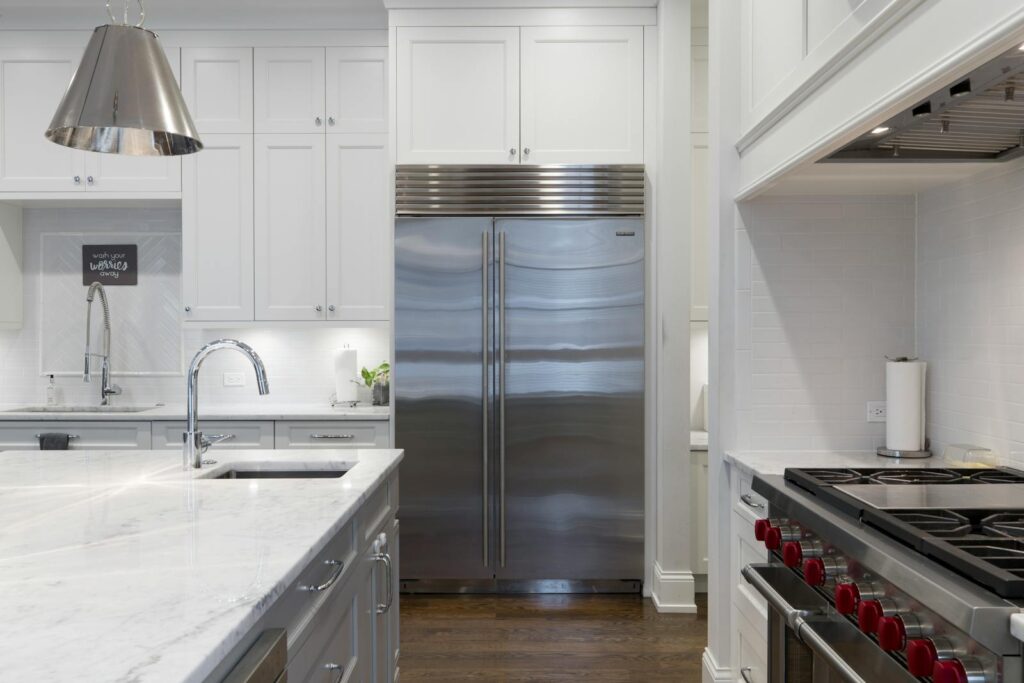Have you ever stumbled upon an old treasure that, despite its age, functions as if it were brand new? There’s a certain magic to these vintage gems, especially when they outperform their modern counterparts. This is the story of a 1945 refrigerator, a trusty appliance that has stood the test of time without a single service call, still keeping its contents perfectly chilled and its small freezer compartment freezing things “real nice still.”
In an era where we’re constantly chasing the latest technology, it’s refreshing to see a piece of history that doesn’t just survive but thrives. The refrigerator in question isn’t just a household appliance; it’s a testament to the craftsmanship and durability of a bygone era. It’s a reminder that sometimes, they really don’t make them like they used to.
The Secret Behind the Longevity
What is it about this refrigerator that has allowed it to outlast so many others? Is it the quality of materials, the simplicity of its components, or just sheer luck? To understand this, we need to delve into the world of refrigerators, both old and new, and see what makes them tick—or in some cases, what makes them stop ticking.

Older refrigerators were often built with more robust materials and fewer electronic components, which can be prone to failure. They were designed to be functional and straightforward, without the bells and whistles that can complicate modern appliances. This simplicity could be the key to their longevity. Additionally, the mindset of past generations to keep and repair appliances rather than replace them could have contributed to the 1945 fridge’s survival. Regular maintenance, such as cleaning the coils and ensuring the door seals are intact, can go a long way in extending the life of a refrigerator.
Moreover, there’s the emotional value attached to vintage appliances. Owners of such items often take great pride in their upkeep, which can contribute to their continued operation. There’s a sense of satisfaction in preserving a piece of history, and this can motivate individuals to maintain and repair these appliances with more care and attention than they might give to a modern fridge.
Modern Fridge Troubles
While the 1945 fridge has managed to avoid common pitfalls, modern refrigerators often face a suite of problems that can leave owners frustrated and food spoiled. Understanding these issues is the first step to solving them, and perhaps, with a bit of care, we can make our modern appliances last just as long.
One of the most common issues with modern refrigerators is inadequate cooling, leading to food spoiling prematurely. This can be due to simple issues like the temperature gauge being accidentally adjusted or more complex problems within the fridge’s cooling system. If adjusting the gauge doesn’t solve the problem, it might require professional attention.
On the other hand, a fridge can also run too cold, with the freezer becoming a frosty tundra. Excessive frost and ice build-up can be a sign of a gap in the door seal or a faulty defrosting sensor. While sometimes a manual defrost can do the trick, persistent issues often necessitate a specialist’s intervention.
Water puddles around the fridge are another telltale sign of trouble. This could be due to worn-out door seals, a broken drip pan, dislodged hoses, or a clogged freezer drain. Regular maintenance, such as cleaning the drip pan annually, can prevent such issues. If you’re facing persistent puddles, it’s crucial to identify the source and address it promptly to avoid further damage.
Condensation inside the fridge can indicate that it’s not cooling correctly, often due to a faulty door seal. Rubber seals can deteriorate over time, allowing cool air to escape. Replacing these seals can be a simple yet effective solution to restoring your fridge’s efficiency.
Maintaining Modern Appliances
While modern refrigerators come with their fair share of issues, many of them can be prevented or resolved with proper care and maintenance. By being vigilant and addressing problems early, we can extend the life of our appliances and perhaps even replicate the longevity of the 1945 fridge that continues to work like a charm.
It’s essential to perform regular maintenance tasks. Cleaning the condenser coils, checking the door seals, and ensuring the temperature settings are correct can prevent many common issues. Regularly defrosting the freezer and cleaning the drip pan can also help maintain optimal performance.
Be mindful of how you treat your refrigerator. Avoid overloading it, as this can strain the cooling system. Ensure that the door is closed properly and that the seals are intact. Small actions like these can have a significant impact on the longevity of your appliance.
Don’t hesitate to seek professional help when needed. While DIY fixes can be effective for minor issues, complex problems often require the expertise of a specialist. Addressing issues promptly can prevent them from escalating and causing more significant damage.
A Lesson from the Past
The story of the 1945 refrigerator is not just about a machine that keeps food cold. It’s about the intersection of history, technology, and the human touch. It’s a narrative that challenges our throwaway culture and invites us to appreciate the craftsmanship of the past. As we move forward with technological advancements, it’s important to remember the lessons that these vintage appliances teach us about quality, care, and sustainability.
By taking inspiration from the past and applying it to our present, we can ensure that our modern conveniences can stand the test of time just as admirably. The timeless reliability of vintage appliances like the 1945 refrigerator reminds us that sometimes, simpler really is better, and with the right care, even modern technology can achieve lasting durability.




